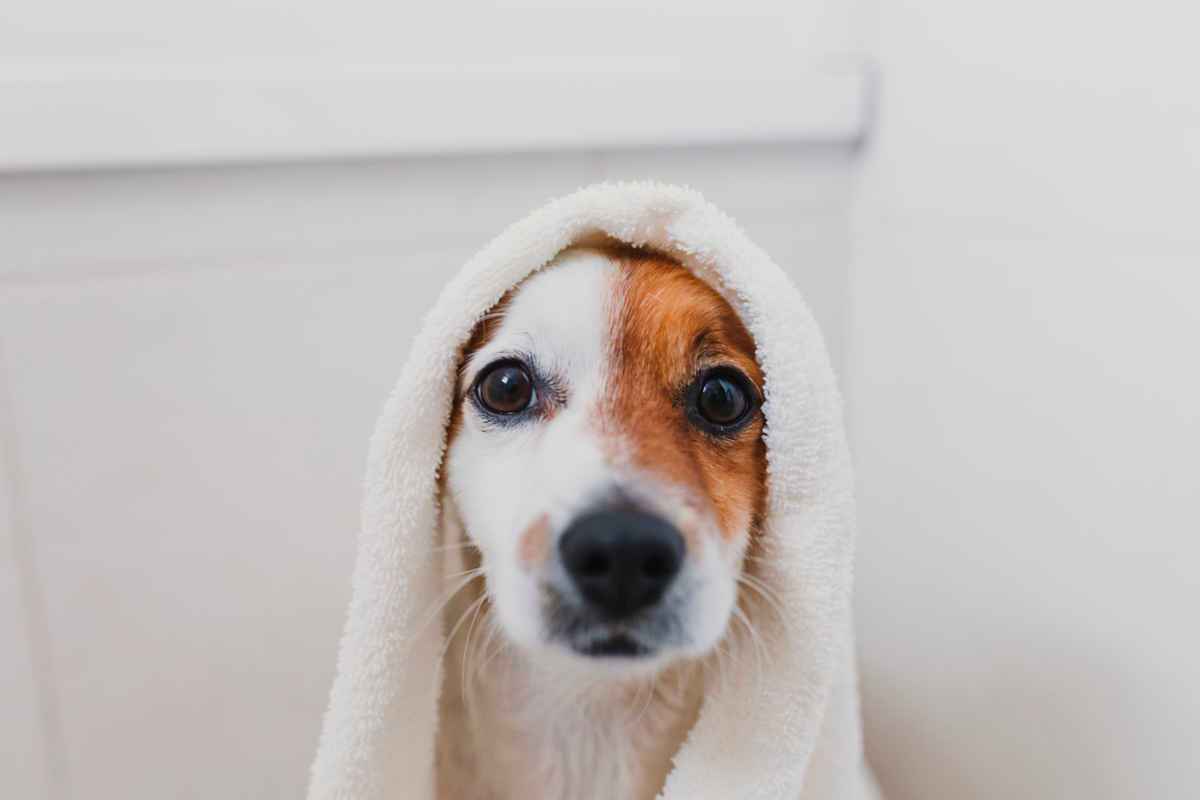As well as helping to remove that doggy odour, bathing your dog also helps to remove allergens, dirt and bacteria – plus it's a good opportunity to check for any ticks, fleas or lumps.
How often should you wash your dog?
Depending on your dog's breed and lifestyle, most experts recommend that dogs should be bathed (at minimum) once every three months, and no more than once a week (unless they're splashing in some very muddy puddles!). This will keep your dog clean and fresh, as well as maintaining healthy skin.
It's important to choose your dog shampoo and conditioner carefully, staying away from harsh products and ones designed for humans (dogs' skin has a different pH level to ours, so human products will strip away its natural oils). If your dog has a specific skin concern, there are a number of specially formulated shampoos and conditioners available, but do check with your groomer or vet if you are unsure.
You will need:
- A non-slip bath mat
- A few towels – including one for your dog to stand on when they get out
- Dog shampoo and conditioner
- A set of suitable combs and brushes
- Eye wash (just in case!)

To avoid mid-bath getaways, ensure you have everything you will need within reach!
Directions:
- First off, give your dog's coat a thorough brush.
- Start running the water through your shower head, on a low pressure. The water should be lukewarm – warm enough so they're comfortable, but not too hot. Test the temperature on your hand before getting your dog into the bath.
- Use the shower head to wet your dog from the neck downwards. Ensure all layers of their coat are saturated before you start applying your dog's shampoo (which may take longer than you think for thick or water-resistant coats).
- Run the shampoo along their back and gently massage all over their body. Don’t forget the pads of their feet, belly and armpits. Avoid their face and ears.
- Let the shampoo sit for several minutes before rinsing. This is a good time to give them verbal praise as well as a treat, particularly if they look anxious.
- Gently rinse and then shampoo again. On the second rinse, ensure you have removed all traces of shampoo to avoid irritation.
- Next, apply your dog's conditioner and leave it on for a few minutes before doing another thorough rinse.
- To wash their face, soak a cloth in clean water and gently wipe around their face. (It's important not to get soap in sensitive areas like their eyes, nose and ears.)
- Finally, get them out of the bath and dry them with a towel or, if your dog doesn't mind the noise, a hairdryer set to a low heat. Drying your dog is important to avoid damp spots in their undercoat which can lead to hotspots (lesions that itch and become infected).
- As your dog dries, keep brushing them to remove knots and to help speed up the drying process.
For dogs who don't like baths...
Some dogs are very nervous about water, so it may take time to get them onboard. Be prepared to spend a number of weeks gradually conditioning your dog to associate the bath with positive things like attention, fun and praise.
First off, simply get your dog to come to the bath (or even the bathroom if they're especially suspicious) by offering treats, toys and affection.
When that is no longer a problem, lure them into the empty bathtub (again, with the help of treats and toys). Only after this stage should you introduce any water. Bear in mind that they may be more confident with the bath plug out, so the tub is not filling up.
It's also a good idea to enlist the help of a friend or family member – they can distract your dog and help to calm them down, making it a much less stressful experience.







